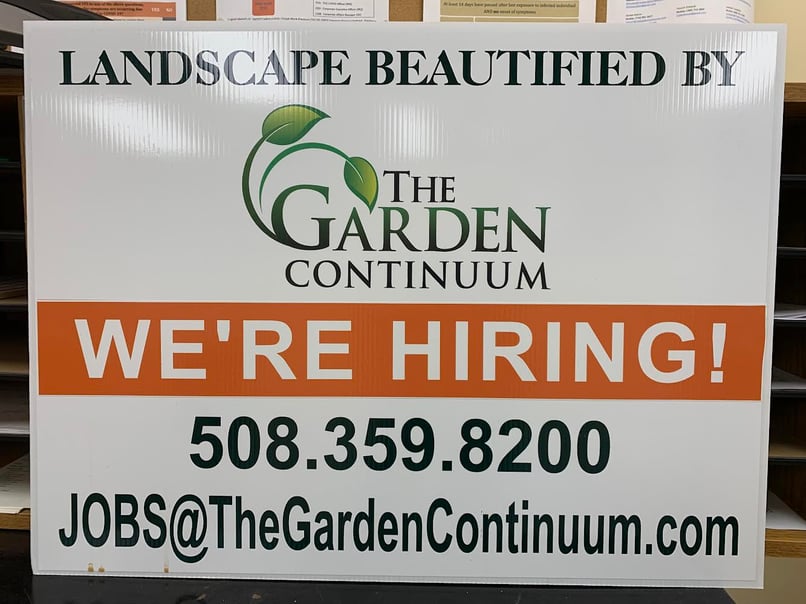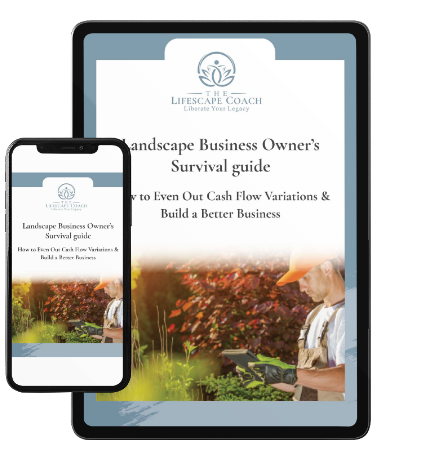5 Steps to Structure Your Landscape Business Organization for Growth
All of the recent and current economic uncertainty has taken a toll on many businesses as well as the workforce. Lots of companies in the landscape industry are scrambling to find help and many end up looking in the wrong places and filling gaps in the field and in the office with workers who may not be the right fit. So what’s a landscape business owner to do?
Create an organizational chart and use it.
An organizational chart is a highly effective business tool that maps out the structure, chain of command, and employee communications hierarchy within your company. It is the only way to truly know what you have, what you need, and where you want to go as you grow. An organizational chart lays out the operational infrastructure of your business so you can clearly see how its different pieces interrelate and function on a daily basis.
It’s important to note that an effective organizational chart is a “living document.” It should evolve as your business evolves. It is not carved in stone.
Here are 5 steps that will help you put together a meaningful organizational chart that will provide actionable insights into your current and future business:
1. Map your business of today Outline what your company looks like right now:
-
Who’s doing what? List their titles and functional area within your operation
-
What are their responsibilities and how do they communicate with those above and below them?
-
What specific resources are available that enable your workers to get things done?
-
What's missing?
Some business owners resist doing this because it makes them uncomfortable – it can reveal areas of inefficiency and dysfunction. But you can’t fix things if you don’t know what’s broken.
2. Map your business of tomorrow
If you could make just a few tweaks to improve your current situation, what would they be? This is more a strategic exercise than a tactical one – there is no specific timeline involved. This is the time and place to experiment with restructuring your business on paper:
-
If you added workers, what would their titles and functions be? What value would they add?
-
What changes could you make to the chain-of-command to improve it?
-
Poke holes in your communications structure – if workers reported differently would things improve or become worse?
-
What are some ways you could streamline operations?
-
What new services might you add and what resources would they need?
-
What new challenges might pop up as a result of change?
-
How will change affect revenue?
Once you propose, analyze and accept or reject various potential changes to your business, what does your new-and-improved structure look like? Once you’ve settled on a revised organizational chart, move to the next step.
3. Map your business for next year
Now’s the time to take those strategic changes you just mapped out and create a tactical plan to begin executing them. Look at the next 12 months and figure out the best way to start evolving into “YourLandscapeBusiness 2.0.”
Maybe you can’t start adding employees quite yet, but you can begin streamlining your operations as you’ve outlined in your revised organizational chart. What changes to your communications and command structures can you make that will help your workers be more efficient and support each other better? What tweaks can be made to reduce overall stress, relieve some of your burden, and set or reset expectations for each team member?
 Recruiting is only part of the game. Retention happens when your employees know where they stand and feel at home.
Recruiting is only part of the game. Retention happens when your employees know where they stand and feel at home.
4. Map your business three years from now
Take a close look at all the things you do as the owner and imagine that you get to keep the tasks you love and offload those you don’t. This is the point where, if things go according to plan, you can begin to ease off the throttle a bit. Where you can stop doing everything yourself and think about how your company can become a “lifestyle business” – one that enables you to begin doing more of the personal and professional things you’d like to do. What structural and functional changes do you need to make to provide more lifestyle flexibility for yourself?
This version of your organizational chart is a little bit strategic, a little tactical, and a lot aspirational. It will help you envision where you’d really like to be in a few years and some of the changes you can and should make to accomplish your goal.
5. Share your charts with your key team players
Properly done, your organizational charts provide a glimpse into the future, and that’s absolutely critical in today’s job market. The turmoil we’re currently experiencing in the labor force, due in large part to the pandemic, has resulted in what business analysts refer to as the Great Resignation – workers are quitting their jobs in record numbers to reconsider, relocate, and restart their careers. Many employees aren’t staying in their jobs for more than 24 to 36 months; they’re leaving primarily because of dissatisfaction and an unclear future with their present employer. No one likes to be in the grip of uncertainty.
If you want to retain and nurture your employees, your job as business owner is to help them clearly see their future with you and how they can grow with your company. But the only way that they can see that clear a picture is if you can clearly see the future of your business. And that’s where your organizational chart comes in. Share it with your key players so you can have substantive discussions with the people you’re most interested in developing as an integral part of your future business.
 There’s nothing better than witnessing employee pride in your brand!
There’s nothing better than witnessing employee pride in your brand!
No time better than now.
Keep in mind that this is not a “one-and-done” proposition. Developing your organizational chart takes time and evolves over time. But getting over the initial hump of producing the first go-round should take just several hours over a couple of days. Once that’s done, the various iterations of it should be a lot easier.
In my experience, I’ve found it is best done in collaboration with a trusted colleague, business partner, or even a professional coach. This individual can provide some objective checks-and-balances and keep you honest in your assessment of your business. After all, we’re only human -- it’s sometimes easier to simply gloss over the weak and dysfunctional parts of a business and focus on the positive things. But that’s not helpful.
Yes, of course you can develop your organizational chart by yourself – in fact, I did for many years before I shared it with anyone. But once I started involving others in the process it became a much more powerful tool for business growth and employee retention.
However you choose to do it, just do it. There is nothing more satisfying and helpful than developing a clear picture of your business, now and as you see it in the future. You’ll begin to see opportunities you may have missed without it. Share in the comments what’s holding you back, or what insights you’ve gained from this exercise. I read every comment personally!
If you’re ready to give yourself permission to move out of owner isolation and into professional collaboration, I encourage you to send me a personal email at Monique@TheGardenContinuum.com. Let me know what’s going on in your business right now and set up your complimentary business discovery session so we can do some forensics to uncover your next move.
Let me know about your recruiting journey. Give me feedback on this blog post. I read every response sent to me because the landscape industry needs leaders like you who will roll up their sleeves and do the incredibly honorable work of being an employer. I’m totally up for the conversation!
Landscape Business Owners Survival Guide



